Brain and Neuropsychology
5.0(1)
5.0(1)
Card Sorting
1/64
Earn XP
Description and Tags
Study Analytics
Name | Mastery | Learn | Test | Matching | Spaced |
|---|
No study sessions yet.
65 Terms
1
New cards
nervous system
The network of nerve cells and fibers that transmits nerve impulses between parts of the body.
2
New cards
Central nervous system
Consists of the brain and spinal cord
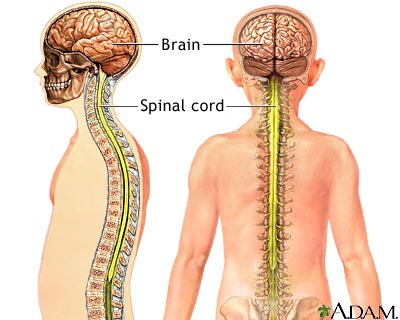
3
New cards
peripheral nervous system
The sensory and motor neurons that connect the central nervous system to the rest of the body. Composed of the somatic nervous system and the autonomic nervous system.
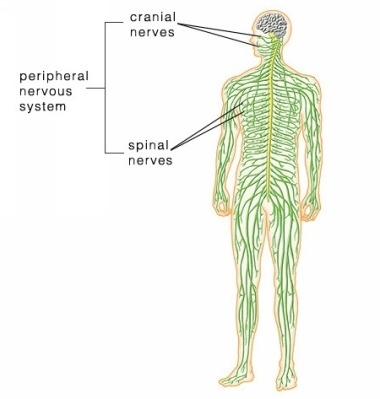
4
New cards
Somatic nervous system
The division of the peripheral nervous system that controls the body's skeletal muscles. Voluntary movement.
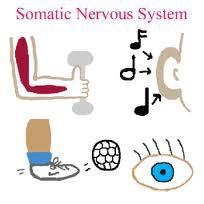
5
New cards
Autonomic Nervous System
The division of the peripheral nervous system that controls the glands and the muscles of the internal organs (such as the heart). Its sympathetic division arouses; its parasympathetic division calms.
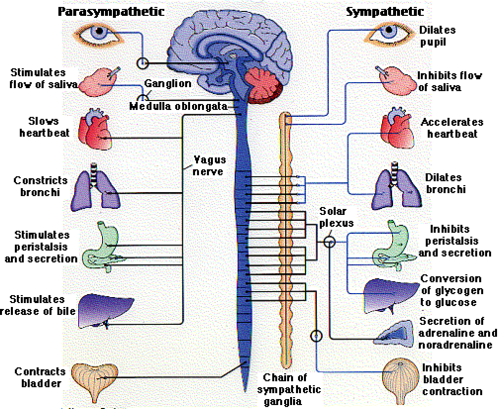
6
New cards
Sympathetic division of the ANS
Involved in preparing the body for behavior, particularly in response to stress, by activating the organs and the glands in the endocrine system.
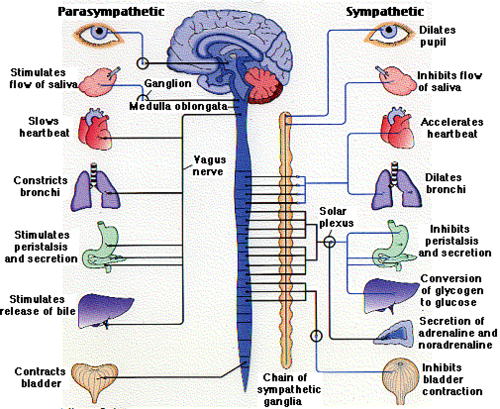
7
New cards
Parasympathetic division of the ANS
Calm the body by slowing the heart and breathing and by allowing the body to recover from the activities that the sympathetic system causes
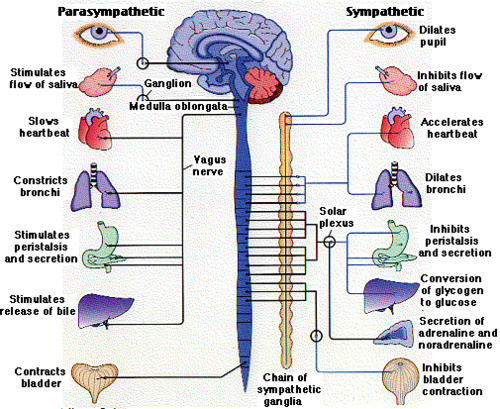
8
New cards
Homeostasis
A tendency to maintain a balanced or constant internal state; the regulation of any aspect of body chemistry, such as blood glucose, around a particular level
9
New cards
Fight or Flight Response
Activation of the sympathetic division of the autonomic nervous system, allowing access to energy reserves and heightened sensory capacity so that we might fight off a given threat or run away to safety
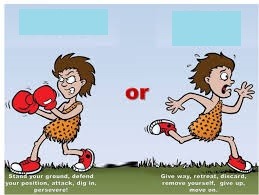
10
New cards
Adrenaline
A hormone released into the bloodstream in response to physical or mental stress
11
New cards
Adrenal Glands
A pair of endocrine glands that sit just above the kidneys and secrete hormones (epinephrine and norepinephrine) that help arouse the body in times of stress.
12
New cards
Cardiovascular system
heart and blood vessels
13
New cards
Hypothalamus
A neural structure lying below the thalamus; it directs several maintenance activities (eating, drinking, body temperature), helps govern the endocrine system via the pituitary gland, and is linked to emotion and reward.
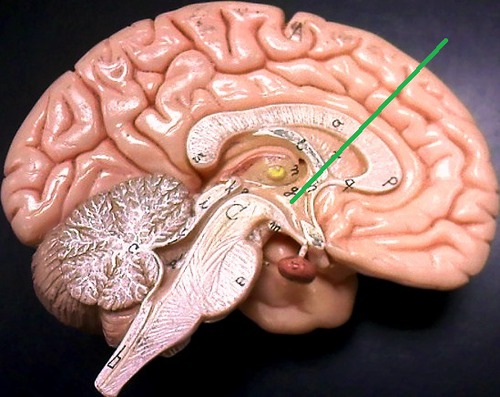
14
New cards
Physiological changes/arousal
Related to the body
15
New cards
Hormone
Chemical messengers, mostly those manufactured by the endocrine glands, that are produced in one tissue and affect another
16
New cards
James-Lange Theory
Theory of emotion that suggests that our experience of physiological changes come first, which the brain then interprets as an emotion.
17
New cards
Emotion
A strong feeling or mood that has important motivational properties, it drives an individual to behave in a particular way.
18
New cards
Neuron
nerve cell
19
New cards
Sensory Neuron
neurons that carry incoming information from the sensory receptors to the brain and spinal cord
20
New cards
Motor Neuron
a neuron that sends an impulse to a muscle or gland, causing the muscle or gland to react
21
New cards
Relay Neuron
Nerve cell that transmits electrical impulses from sensory neurons to motor neurons
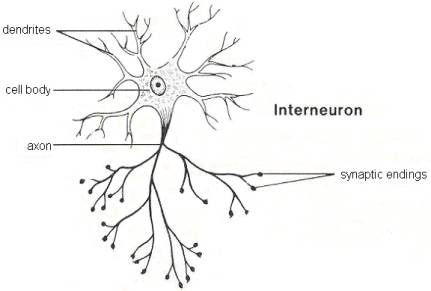
22
New cards
Inhibitory
Keeps next cell from firing
23
New cards
Excitatory
Causes next cell to fire
24
New cards
Summation
accumulation; total result of inhibitory and excitatory.
25
New cards
Synaptic transmission
The relaying of information across the synapse by means of chemical neurotransmitters.
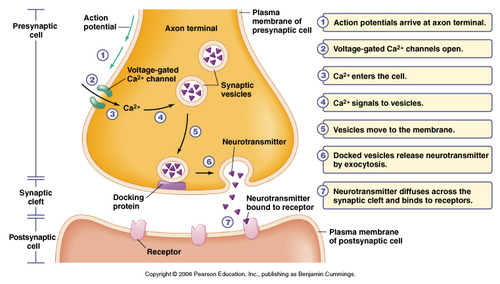
26
New cards
Soma
Cell body of a neuron
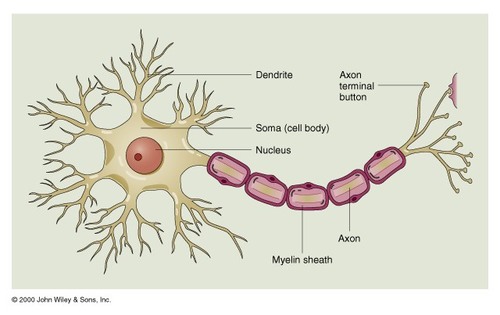
27
New cards
Nucleus
A part of the cell containing DNA and RNA and responsible for growth and reproduction
28
New cards
Axon
Carries the electrical signal away from the cell body and down the length of the neuron
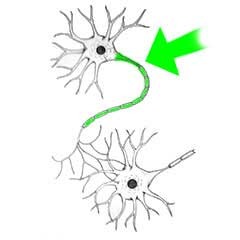
29
New cards
Myelin Sheath
A layer of fatty tissue segmentally encasing the fibers of many neurons; enables vastly greater transmission speed of neural impulses as the impulse hops from one node to the next.
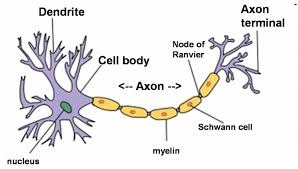
30
New cards
Nodes of Ranvier
Gaps in the myelin sheath to which voltage-gated sodium channels are confined.
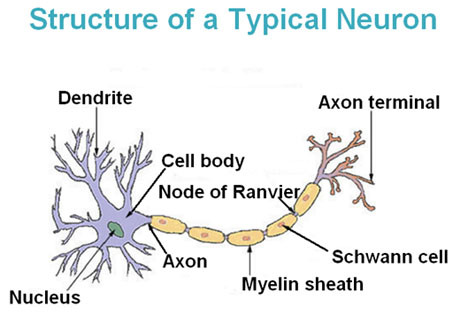
31
New cards
Synaptic cleft
The narrow gap that separates the presynaptic neuron from the postsynaptic cell.
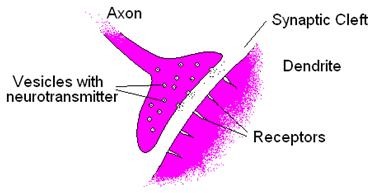
32
New cards
Terminal button
the bud at the end of a branch of an axon; forms synapses with another neuron; sends information to that neuron
33
New cards
Dendrites
Branchlike parts of a neuron that are specialized to receive information.
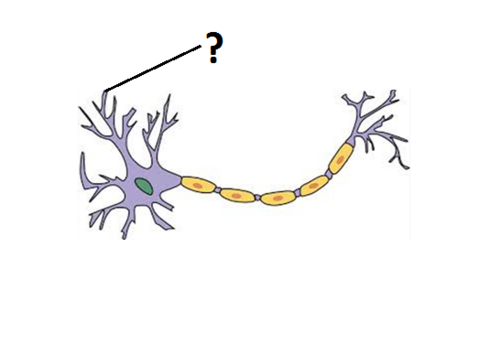
34
New cards
Neurotransmitter
Chemical messengers that cross the synaptic gaps between neurons
35
New cards
Hebb's theory of learning and neuronal growth
An early theory of 'plasticity' in the brain which suggests that learning causes synaptic connections between groups of neurons to become stronger. The groups of neurons are called cell assemblies, and the neuronal growth that occurs between these will create more efficient learning in the brain.
36
New cards
Plasticity
the brain's ability to change, especially during childhood, by reorganizing after damage or by building new pathways based on experience
37
New cards
Engram
The physical changes in the brain associated with a memory/learning. It is also known as the memory trace.
38
New cards
Cell assemblies
Ensembles of neurons linked via Hebbian synapses that could store memory/learning traces
39
New cards
Neuronal Growth
When a neuron frequently excites another neuron, it results in change or development in one or both of the neurons.
40
New cards
Reductionist
approach that seeks to define a complex set of facts by a simpler set of facts
41
New cards
Objective
unbiased; not subjective
42
New cards
Frontal Lobe
A region of the cerebral cortex that has specialized areas for movement, abstract thinking, planning, memory, and judgement
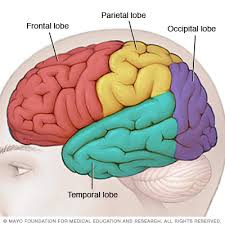
43
New cards
Parietal Lobe
A region of the cerebral cortex lying at the top of the head and toward the rear; receives sensory input for touch and body position
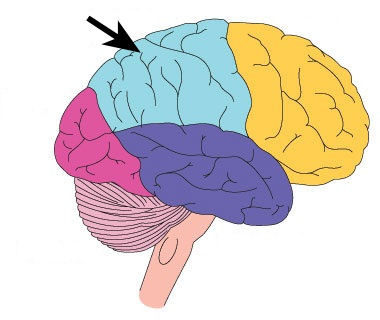
44
New cards
Somatosensory area
An area of the parietal lobe that processes sensory information such as touch
45
New cards
Occipital lobe
A region of the cerebral cortex that processes visual information
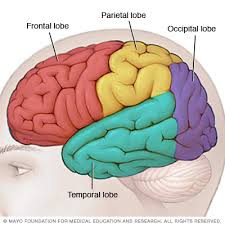
46
New cards
Temporal lobe
A region of the cerebral cortex responsible for hearing and language.
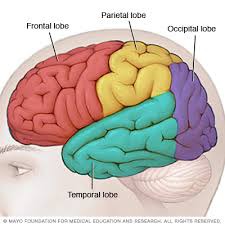
47
New cards
Cerebellum
The "little brain" at the rear of the brainstem; functions include processing sensory input and coordinating movement output and balance
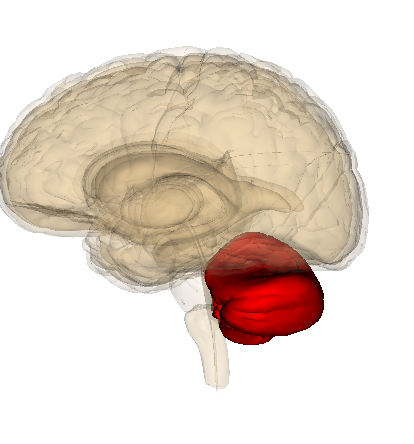
48
New cards
Cerebral Cortex
Outer region of the cerebrum, containing sheets of nerve cells; gray matter of the brain
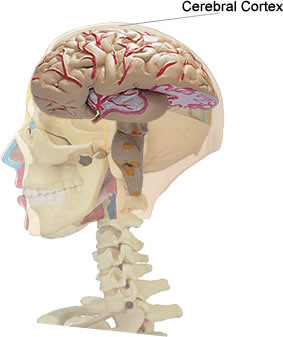
49
New cards
Motor Area
A region of the frontal lobe involved in regulating movement
50
New cards
Visual Area
A part of the occipital lobe that receives and processes visual information
51
New cards
Wernicke's Area
A brain area involved in language comprehension and expression; usually in the left temporal lobe
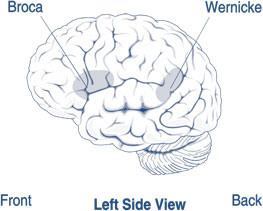
52
New cards
Auditory Area
A part of the temporal lobe that receives and processes auditory information
53
New cards
Broca's Area
Controls language expression - an area of the frontal lobe, usually in the left hemisphere, that directs the muscle movements involved in speech.
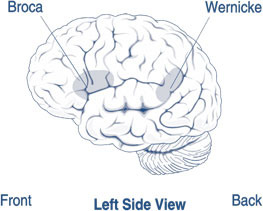
54
New cards
Localisation of function
Specific functions are served by specific areas of the brain
55
New cards
Montreal Procedure
A surgical procedure to treat epilepsy, originally developed by Wilder Penfield, in which the neurons that produced seizures were surgically destroyed.
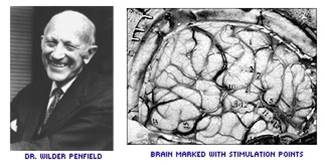
56
New cards
Cognitive neuroscience
The scientific study of biological structures that underpin cognitive processes e.g. the hippocampus and it's involved in the formation of memories.
57
New cards
Neurological Damage
Any event, such as illness or injury, which can result is neuron damage in the brain which may lead to a loss of function or change in behaviour.
58
New cards
Stroke
Damage to the brain from interruption of its blood supply.
59
New cards
aphasia
impairment of language, usually caused by left hemisphere damage either to Broca's area (impairing speaking) or to Wernicke's area (impairing understanding).
60
New cards
CT scan
A series of x-ray photographs taken from different angles and combined by computer into a composite representation of a slice through the body. Useful for revealing abnormal structures in the brain as higher quality than X-ray but more radiation than a traditional X-Ray and only provides structural information.
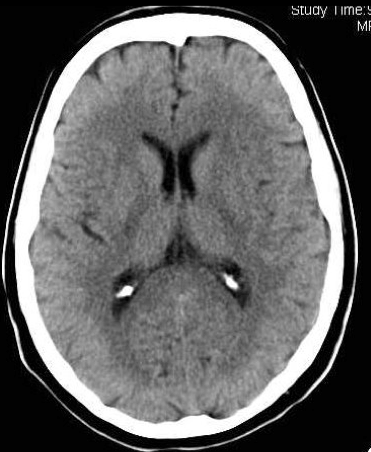
61
New cards
PET scan
A visual display of metabolic activity in the brain that detects where a radioactive form of glucose goes while the brain performs a given task. Useful to show the brain in action and can show localisation of function, however expensive, not easy to interpret and ethical issues to do with injection of glucose.
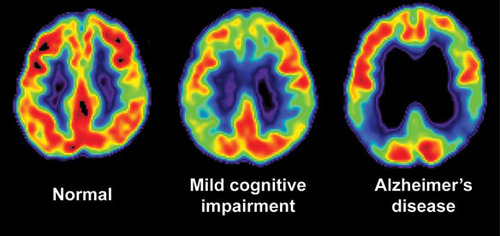
62
New cards
fMRI Scan
A technique for revealing blood oxygen levels in the brain (the haemodynamic response) and, therefore, brain activity by comparing successive MRI scans, showing brain function. Can show localisation, very safe and very clear images but expensive, need to be perfectly still and can come with a 5-second time lag.
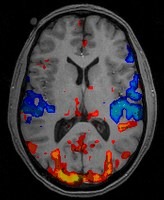
63
New cards
Semantic memory
memory for knowledge about the world
64
New cards
Episodic Memory
memory for one's personal past experiences
65
New cards
Summary of James Lange theory
event -> arousal -> interpretation -> emotion